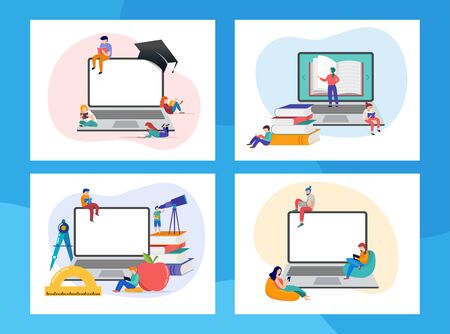1. The Rise of Remote Work in the U.S.
Over the past few years, remote work has rapidly transformed the American workplace. What began as a temporary solution during the COVID-19 pandemic has now become a permanent fixture for many companies across different industries. Today, millions of Americans work from home at least part of the time, and this shift is having a huge impact on how people balance their jobs and personal lives.
Remote Work Growth Across Industries
Remote work is no longer limited to tech companies or startups. It has expanded into fields like finance, education, healthcare administration, customer service, and even marketing. Here’s a quick look at how remote work adoption varies by industry:
| Industry | % of Jobs Offering Remote Options |
|---|---|
| Information Technology | 70% |
| Finance & Insurance | 55% |
| Education (Admin & Support) | 40% |
| Healthcare (Admin Roles) | 35% |
| Retail & Hospitality | 10% |
Main Drivers Behind the Shift to Remote Work
Several factors have fueled the rise of remote work in the United States:
- Technology Advancements: High-speed internet, cloud computing, and video conferencing tools make it easy for teams to stay connected from anywhere.
- Employee Preferences: Many Americans prefer flexible schedules and less time spent commuting, leading employers to offer more remote options to attract and keep talent.
- Pandemic Response: The COVID-19 crisis forced organizations to adapt quickly to remote work models, proving that many roles can be performed effectively from home.
- Cost Savings: Companies save money on office space and utilities by allowing employees to work remotely.
- Diversity and Inclusion: Remote work opens opportunities for people from different locations and backgrounds, helping companies build more diverse teams.
The Ongoing Shift in Workplace Culture
This growth in remote work is not just a trend—it’s reshaping what work-life balance means for American workers. As more industries embrace flexible work arrangements, both employers and employees are redefining productivity, collaboration, and well-being in new ways that fit modern lifestyles.
2. Blurring the Lines Between Work and Life
Remote work has brought a big change to the way Americans separate their jobs from their personal lives. When you work from home, the boundaries between your professional and personal spaces can get fuzzy. The kitchen table turns into an office desk, and meetings can happen right next to where your kids are having breakfast.
How Daily Routines Have Changed
Before remote work became common, many people had set routines: wake up, commute, work at the office, then head home. Now, those routines look very different. Here’s a simple comparison:
| Traditional Office | Remote Work |
|---|---|
| Fixed start and end times | Flexible hours, often based on workload or meetings |
| Commute to workplace | No commute—work starts at home |
| Lunch break with coworkers | Lunch break at home, sometimes with family |
| Clear separation between work and home life | Work and home activities often overlap |
The Impact on Family Dynamics
Working from home means more time spent with family, but it also means more interruptions. Parents might help kids with homework between calls or take care of household chores during what used to be office hours. This new setup brings both opportunities and challenges:
- Positive: More chances for family bonding and flexibility in managing personal commitments.
- Challenging: Harder to “switch off” from work, making it tough to fully relax at home.
- Need for New Habits: Families often need to set new rules or schedules so everyone knows when it’s time for work or play.
Tips for Managing Blurred Boundaries
- Create a dedicated workspace if possible—even a small corner can help signal “work time.”
- Set clear start and end times for your workday.
- Communicate your schedule with family members to avoid unnecessary interruptions.
- Take regular breaks away from screens to recharge.
The Bottom Line for American Households
The shift to remote work is changing how Americans think about balancing job duties and personal life. It’s not just about working from a different location; it’s about finding new ways to keep work and life in harmony—even when they share the same space.

3. Benefits and Opportunities for Employees
Flexibility That Fits American Lifestyles
One of the biggest advantages remote work offers to American workers is flexibility. With the ability to choose when and where to work, employees can better manage their schedules, making it easier to handle family responsibilities, run errands, or even pursue hobbies. This kind of flexibility is especially valuable for parents, caregivers, and anyone who wants more control over their daily routine.
Improved Mental Health and Well-being
Remote work has brought significant improvements in mental health for many people. Without long daily commutes and with the option to design a personalized workspace, employees report less stress and burnout. Many American workers have found that being able to take breaks when needed or spend more time with loved ones helps maintain a healthier work-life balance. The comfort of working from home also means people can seek out moments of calm during busy days.
Savings on Commuting and Daily Expenses
Commuting can be expensive and time-consuming in the United States, especially in large cities. Remote work removes the need for long drives or crowded public transportation, which means more money stays in employees’ pockets and more time is available each day. Here’s a quick look at how these savings add up:
| Expense Category | Estimated Monthly Savings |
|---|---|
| Gas & Transportation | $100 – $300 |
| Work Lunches & Coffee | $50 – $150 |
| Professional Attire/Laundry | $30 – $80 |
| Total Potential Savings | $180 – $530+ |
What Matters Most to American Workers?
For many Americans, the most important benefits of remote work are not just about saving money or avoiding traffic jams—they’re about having more freedom, improving overall well-being, and making life outside of work richer and more fulfilling. Whether it’s picking up kids from school, enjoying a midday walk, or simply having extra time for self-care, remote work is helping reshape what it means to truly balance work and life in the United States.
4. Challenges in Maintaining Balance
Overwork: When Home Becomes the Office
One of the biggest challenges remote workers in the U.S. face is the blurring of lines between work and home life. Without a clear boundary, it’s easy to let work hours spill into personal time. Many employees find themselves checking emails late at night or working through weekends, leading to burnout.
| Challenge | Impact on Work-Life Balance |
|---|---|
| Unclear Boundaries | Work hours extend into personal time, causing stress and fatigue. |
| Constant Connectivity | Difficult to fully unplug from work responsibilities. |
Isolation: Missing Out on Social Connection
Remote work often means fewer opportunities for casual conversations and social interactions with colleagues. This lack of face-to-face contact can lead to feelings of isolation and loneliness, which affects mental well-being and job satisfaction. In American culture, where workplace camaraderie is valued, this can be especially tough.
Common Feelings Among Remote Workers:
- Sensing disconnection from team members
- Lack of informal feedback and support
- Difficulty building new professional relationships
Finding Time to Unplug: The Struggle to Disconnect
Many remote workers find it challenging to truly disconnect from their jobs. With laptops and smartphones always nearby, the temptation to check in “just one more time” is strong. Americans are known for their strong work ethic, but without designated downtime, it becomes hard to recharge and maintain a healthy balance.
Tips for Creating Separation:
- Set clear start and end times for your workday.
- Create a dedicated workspace at home.
- Use digital tools to schedule breaks and reminders to log off.
- Communicate boundaries with your team and manager.
The shift to remote work has brought flexibility but also new hurdles for maintaining balance. Understanding these challenges is the first step toward creating healthier work-life habits in the evolving American workplace.
5. The Future of Work-Life Balance in America
Evolving Expectations for Remote Work
Remote work has changed what employees expect from their jobs across the United States. Many workers now look for roles that offer flexibility, whether it’s working from home full-time, a hybrid schedule, or flexible hours. People value having more control over their time so they can better manage family commitments, personal interests, and self-care. This shift is pushing companies to rethink how and where work gets done.
Trends in Workplace Culture
The rise of remote work is creating new trends in American workplace culture. Trust and communication have become more important than ever before. Companies are focusing on clear goal-setting and results rather than tracking hours worked. Theres also more emphasis on well-being initiatives, such as virtual wellness programs and mental health support. Team-building activities are moving online, while managers are being trained to lead remote teams with empathy and flexibility.
Key Trends in Workplace Culture
| Trend | Description |
|---|---|
| Flexible Schedules | Employees can choose when they start and end their workday to fit their personal lives. |
| Results-Driven Management | Focus is on outcomes and performance instead of strict 9-to-5 schedules. |
| Mental Health Support | More resources for stress management, counseling, and wellness programs. |
| Virtual Collaboration Tools | Use of platforms like Zoom, Slack, and Teams for seamless communication. |
| Diversity & Inclusion Initiatives | Efforts to make remote workplaces welcoming for everyone, regardless of location or background. |
How Organizations Are Adapting
American businesses are making big changes to support a healthy work-life balance for their teams. Many have adopted flexible leave policies and encourage employees to take breaks throughout the day. Some companies are offering stipends for home office setups or providing access to coworking spaces for those who need a change of scenery. Leaders are also checking in regularly with their teams to make sure workloads are manageable and employees feel supported.
Examples of Organizational Adaptations
| Adaptation | How It Helps Employees |
|---|---|
| Home Office Allowances | Covers costs for desks, chairs, or tech equipment needed for comfortable remote work. |
| Flexible Paid Time Off (PTO) | Makes it easier for employees to take time away when needed without stress. |
| Regular Well-Being Check-Ins | Keeps communication open about workload, stress levels, and support needs. |
| Mental Health Days | Dedicated days off specifically for mental rest and self-care. |
| Remote Work Training Programs | Helps both managers and employees develop skills needed to succeed outside the office. |
As expectations keep evolving, organizations that adapt quickly will not only attract top talent but also create happier, more balanced teams ready to face future challenges together.


